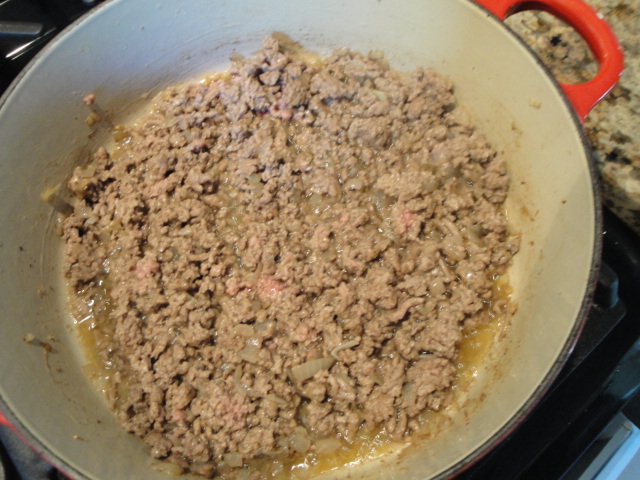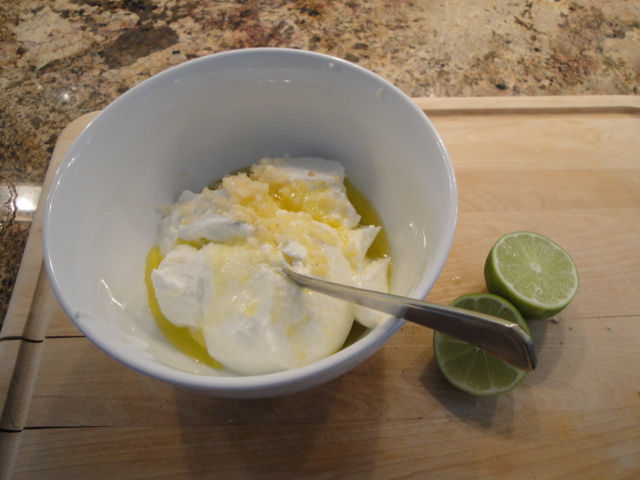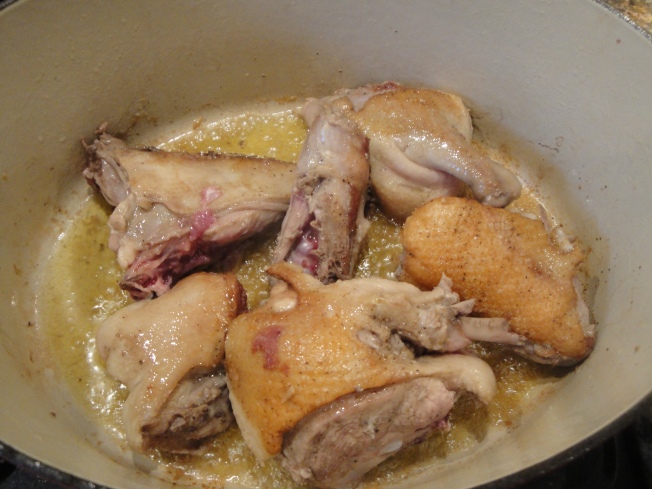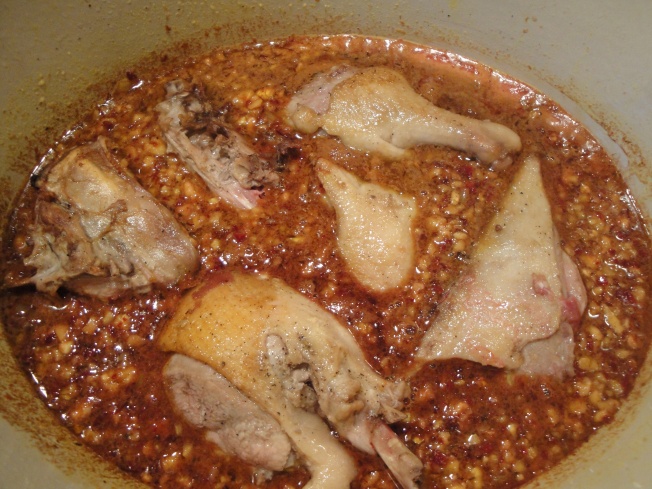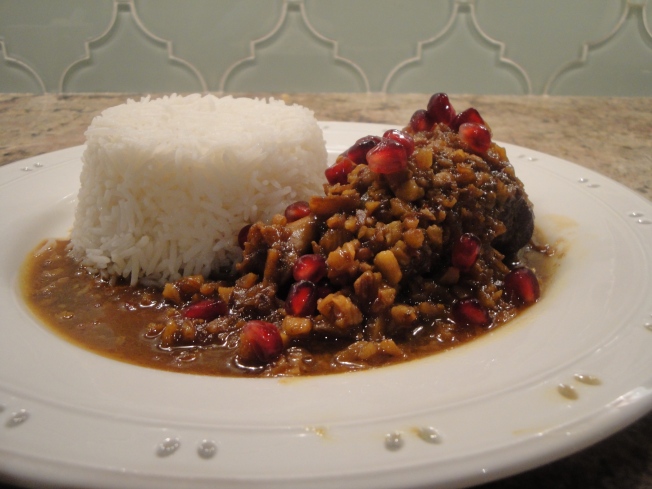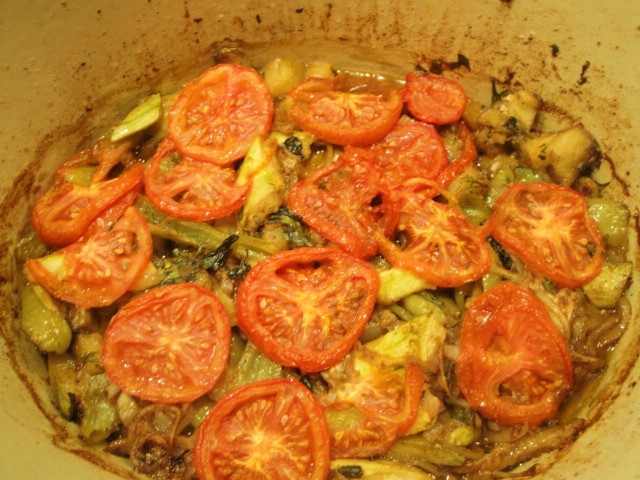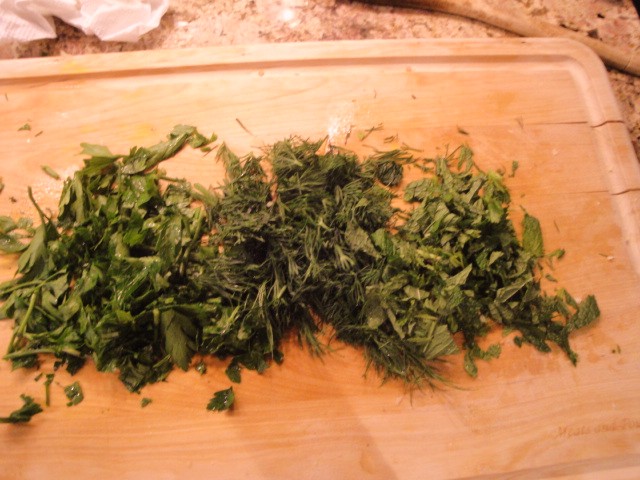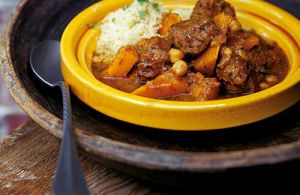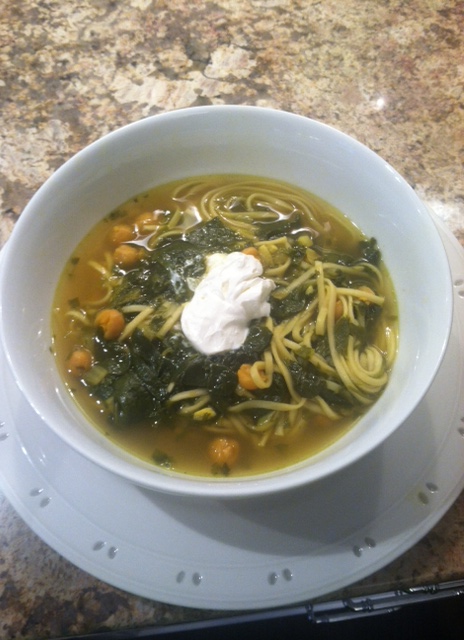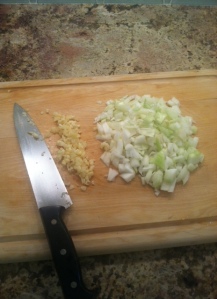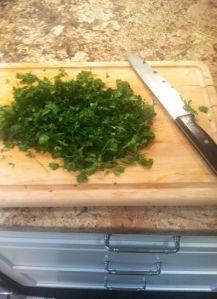This is an Emeril Lagasse recipe that I found on the Food Network website. I loved it because of its simplicity and because it combines my favorite middle eastern spices: saffron, turmeric, and ginger, which are staples of the Moroccan cuisine. More important is lamb, the dish’s main ingredient. The gamy smell of lamb reminds me of Eid El-Adha, a major Muslim holiday I grew up celebrating, when able Muslims sacrifice a sheep in a charitable effort to feed the poor.
I love the deep earthy flavor of saffron with its orange yellow color. Although the existence of saffron in any dish is very subtle, it always dominates the dish. The best kinds of saffron come from Spain and Morocco, and pound for pound, saffron is as expensive as gold.
I also very much like the bitter peppery taste of turmeric and the deep yellow color it imparts on food. It grows in India and is used in cooking in Asian and Middle Eastern food, especially Iran.
Ginger, which is indigenous to China and Japan, was brought to North Africa by the Arabs. The fragrance, spiciness and sweetness of dried ginger are very unique and they remind me of a hot ginger drink Egyptians are used to drink at traditional coffee shops. In Egypt, they like to drink it hot and very sweet and love it for its medicinal properties.
I have always been intrigued by the Moroccan cuisine and its variety and richness. The original inhabitants of Morocco were Berbers and the strongest influence on the Moroccan cuisine was the Arab invasion in the seventh A.D. They brought with them new breads, exotic spices, and other foods made from grains. The spices they introduced included cinnamon, ginger, saffron, cumin, and caraway. They also introduced sweet-and-sour cooking, which they had learned from the Persians. In modern times, the French and the British made contributions to Moroccan cuisine.
When I first got interested in Moroccan cuisine, I read a little bit about tagines, the ceramic or cookware that is popular in North Africa. Tagines are used for slow cooking of stews and vegetable dishes. Tagines were used in North Africa, which is primarily a desert because its cone-shaped lid traps steam and returns it to the pot. With this water condensed in the pot, a minimum amount, of water is needed to reach the required tenderness. This method of cooking is very practical in areas where water supplies are limited or where public water is not yet available.
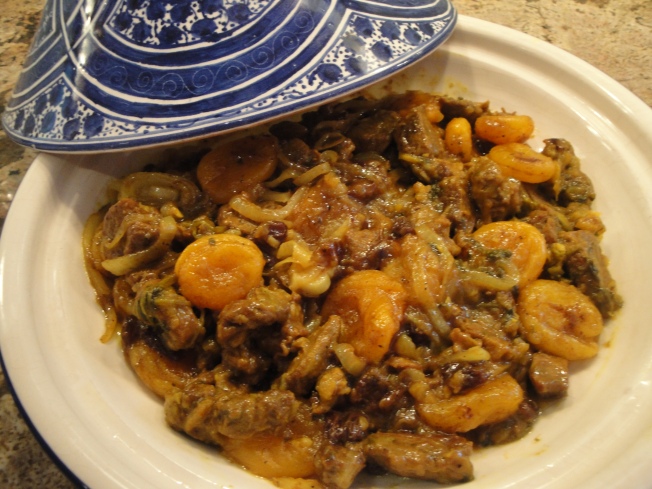
Ingredients
2 pounds boneless lamb shoulder, trimmed of fat (about 1 1/2 pounds)
1 teaspoon ground turmeric
1 teaspoon ground ginger
1 1/4 teaspoons salt
2 tablespoons vegetable oil
1 1/2 cups diced onions
3 large garlic cloves, minced
1 cup chicken broth
8 threads Spanish saffron, crushed
16 fresh cilantro sprigs, tied together with a cotton string
1 cup dried, pitted apricots
1/2 cup golden raisins
1 onion, halved and thinly sliced
2 tablespoons honey
1 teaspoon ground cinnamon
1/2 teaspoon freshly ground pepper
Directions
Usually when I am working on a new recipe, I like to have all the ingredients in one place before I start. The ingredients shown below include: salt, turmeric, saffron, cinnamon, black pepper, cilantro, dried apricots, honey, and chicken stock.

Cut lamb into 1 1/2-inch cubes and place in a medium-sized bowl. Season the lamb with turmeric, ginger and 1/2 teaspoon salt.
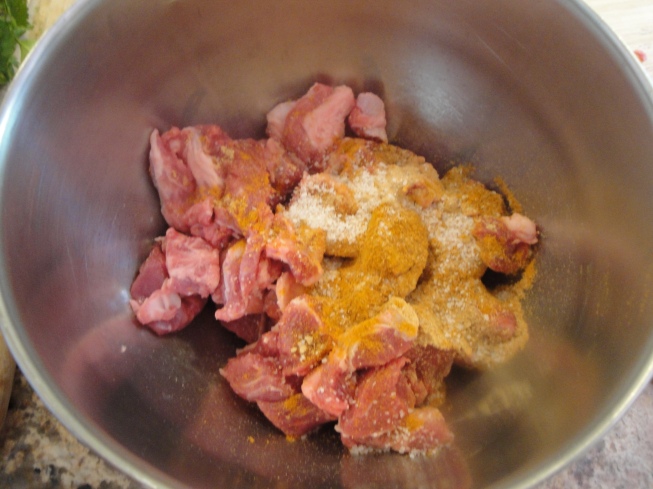
Heat a tagine or Dutch oven over high heat. Add 1 tablespoon oil and the seasoned lamb. Cook the lamb until browned on all sides, 4 minutes. I always like to cook in a Dutch oven just out of habit. Then I like to transfer it to a tagine before eating just to give the dish the feel of authenticity.
Return the browned lamb to the pan and add the diced onions. Cook for 4 minutes and then add the garlic and cstook for 1 minute. Add the chicken broth, saffron, and cilantro bundle and bring the mixture to a boil. Reduce the heat to medium-low and cook, covered, for 1 1/2 hours, or until the meat is tender.

Pour 1 cup of boiling water over the apricots and raisins and let sit for 20 minutes. Strain and set the fruit aside.

Remove the meat, place it on a clean plate, and keep warm. Bring the remaining liquid in the pot to a simmer. Add the sliced onions, apricots, raisins, honey, cinnamon, ground pepper, and 3/4 teaspoon salt. Return the liquid to a simmer and cook for 6 to 8 minutes, or until mixture is slightly thickened. Add the cooked lamb back into the sauce and cook to heat through, about 2 minutes. It could be served with couscous or basmati rice. And Bon Appetit.


